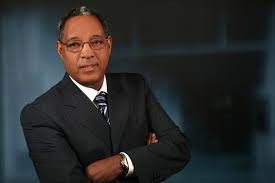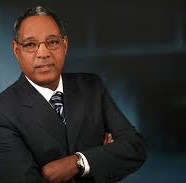Supporting Earth Sciences development in Africa: Interview with Mr Mogessie, Fellow of the African Academy of Sciences
Mr Mogessie, you have recently been elected Fellow of the African Academy of Sciences, representing one of the highest excellences of the continent in the Earth Sciences. In light of this prestigious role, how would you envisage the development of Earth Sciences disciplines in Africa?
Yes, I am elected Fellow of the African Academy of Sciences (AAS) recently, and since May 2015, I had the honor to be elected Fellow of the Geological Society of America (GSA), receive a Certificate of Recognition from the Society of Economic Geologists (SEG) for 25 years of distinguished service, and also elected as Associate Fellow of the Ethiopian Academy of Sciences (EAS). This is a great honor for me and a recognition of my service to the earth sciences development in research and education in Africa, which I have been promoting as elected President of the Geological Society of Africa since 2008.
In light of my role, I envisage the development of Earth Sciences disciplines in Africa as encouraging. As you may know Africa is a big continent with an area of over 30 million Km2 and a population of ca. 1.1 Billion at the moment, increasing at an alarming rate and expected to reach 3 billion by the year 2100. We should therefore see the development of the Earth Sciences and other sectors from this perspective. During the last decade Africa has made progress in many fields among which there is the Earth Sciences.
The coming August and early September 2016, we will organize the 35th International Geological Congress at the Cape Town Convention Center, where we expect more than 5000 earth scientists from all over the world to gather and discuss about their research results in the different fields of Earth Sciences. Among the topics of the different scientific sessions there are mineral resources and their significance in the environmentally sustainable integrated development of Africa. This will be followed by the 26th Colloquium of African Geology, which we are at the moment preparing to hold in Ibadan, Nigeria, in November 2016. A joint meeting of the Geological Society of Africa (GSAf) and the Geological Society of America (GSA) is also in preparation and will take place in Addis Ababa, Ethiopia in March 2017.
Apart from these few examples, there are several initiatives and projects which have been in the pipe line and are ready to be implemented in Africa in 2016 and the coming years, such as PanAfGeo, AMGI, AEGOS, etc. (click here to know more).
The PanAfGeo project will increase knowledge and skills in African Geological Surveys through a long-term strategic cooperation between the Geological Surveys of Europe and the African Geological Surveys. As expert of the Africa Minerals Development Centre (AMDC), what is your opinion on the project and its role within the African Mining vision?
I had a chance to follow the development of the PanAfGeo Project and also review earlier drafts of the PanAfGeo Feasibility Study, participate at workshops and hold personal discussions with colleagues from EuroGeoSurveys and the Organization of African Geological Surveys. I am happy that the European Commission has finally reached a decision to finance this very important project. From the point of view of the Africa Mining Vision (AMV), which I will outline below, the PanAfGeo project can contribute a lot. The question is how it will be implemented on the ground to make a lasting and sustainable impact for the African people and the tax payers in Europe.
The AMV, which was approved by the African Heads of States in 2009, envisages a “transparent, equitable and optimal exploitation of mineral resources to underpin broad-based sustainable growth and socio-economic development”. This shared vision will comprise regional integration with harmonization of legal and regulatory frameworks. This involves i) capacity building of regional and national institutions, and civil society organizations; ii) capture additional resource rents to invest in improved physical, human and social capital; expand mining-related physical infrastructure to unlock other economic potential (agriculture, forestry, tourism); downstream value-addition; upstream value-addition to develop inputs sector (capital goods, consumables, services); iii) technology/product development to incubate niche technological competencies in the sector that can migrate to other sectors; and iv) strengthen environmental and social management.
In this context the PanAfGeo Project will be a strong partner to advance and implement the Africa mining Vision.
PanAfGeo is an ambitious project that will focus on a wide range of topics (i.e. natural resources, sustainable exploitation of non-energy mineral resources, prevention and mitigation of natural and man-made disasters, etc.) and involve a great number of Geological Surveys. What major challenges do you think lie ahead?
The ultimate objective of PanAfGeo is to increase African-owned geological knowledge and skills so that the African Geological Surveys Organisations (GSOs) become key institutions for the minerals sector and OAGS a privilege advisory body to the AUC.
It is also important to note that there are 54 countries and territories in Africa. Among these 54 countries only six Geological Surveys are considered to be well equipped in terms of man power and infrastructure to conduct work what a normal Geological Survey can handle. Therefore the problem Africa faces is enormous and the PanAfGeo project alone cannot solve these problems. However, the project leaders have worked with their African counterparts while developing the proposal and know very well the problems ahead and have defined their priorities.
The African continent is in a good position at the moment to work with project leaders of the various initiatives mentioned above. In order to coordinate such types of initiatives, the African Union Commission (AUC), the African Development Bank (AfDB), the United Nations Development Program (UNDP) and the United Nations Economic Commission for Africa (UNECA) have supported the establishment of the African minerals Development Center (AMDC) at the UNECA Headquarters in Addis Ababa. The AMDC will be the new semi-autonomous Specialized Agency of the AUC in the future.
Therefore, in order to be effective in the implementation process of these Earth Sciences initiatives, including PanAfGeo, the coordination of them has become a priority of the AMDC. It is now developing a Geosciences and Mineral Information Systems Strategy (GMISS) which will outline the objectives and coordination processes of the different projects in Africa in line with the AMV and the Country Mining Vision (CMV) guideline book, which was published in 2014 and where I contributed as a Co-author.
The other significant challenge is the status of the OAGS. EGS will be celebrating its 45th year Anniversary in 2016, whereas the OAGS is less than 10 years old since it was established. Although the OAGS has a permanent Secretariat at the Council of Geosciences (CGS) in Pretoria, South Africa, it needs to be strengthened and legalized. The AUC and the AMDC, I hope will play a major role in the future in strengthening the OAGS and define the role it will play as an important Continental organization. I also see a major role for EuroGeoSurveys through the PanAfGeo project to contribute in strengthening the OAGS, as this is the main objective of the project.
It should also be noted that at the end of the two phases of PanAfGeo, each lasting three years, contribution has to be made in capacity building and infrastructure development in the fields of the Earth Sciences and especially the mineral resources sector. To achieve these objectives a cooperation of EGS with the OAGS and especially the AMDC is essential. The situation we have in Africa at the moment is very dynamic and our European partners can expect a strong support from the different institutions to achieve their objectives. A win-win situation should be created among the respective partners as the challenges are many.
PanAfGeo: “Geoscientific knowledge and skills in African Geological Surveys” is a Pan-African project designed by EuroGeo-Surveys (EGS) and the Organization of African Geological Surveys (OAGS) with the support of several partners such as the Geological Society of Africa (GSAf), UNESCO etc. This project covers four main elements: i) human resources capacity building and training for OAGS members and their partners; ii) development of OAGS geoscience information infrastructure and management; iii) procurement of IT equipment to support the SDI and GIS technical facilities; and iv) dissemination of information about the project.
AMGI: The African Minerals Geoscience Initiative” (AMGI) is a project designed in cooperation with the African Union Commission (AUC) and several partners among them the Geological Society of Africa (GSAf) and the organization of African Geological Surveys (OAGS). AMGI aims to compile, collate, process and store existing geodata in a single repository located in Africa using a two tracks approach.
AEGOS: The main objective of the African-European Georesources Observation System phase I, which was supported by BRGM, France, was to define : i) operational procedures for data management (Spatial Data Infrastructure, metadata, data specifications and systems architecture), ii) user-oriented products and services including the preparation of innovative spin-off projects, iii) the African-European partnership network, iv) a geoscience contribution to the Global Earth Observation System of Systems, in the context of the Infrastructure for Spatial Information in Europe (INSPIRE). A consortium of 23 African and European partners worked on the Phase I of the AEGOS. Phase II is integrated in the PanAfGeo Project.
GIRAF: The Geoscience InfoRmation in AFrica network is a large network of European and African partners supported by the German government with the objective of building a pan-African geoscience information knowledge network of geological surveys, universities and companies; exchange and share geoscience information and good practice; bring together relevant African authorities, national experts and stakeholders in geoscience information; make Africa a more active part of the international geoscience information community; stimulate and support cross-border geosciences information projects in Africa; and gather and review up-to-date feedback on the situation and status of geosciences information and progress in Africa.
LVMM: The initiative “Capacity development of mineral institutions and of small-scale private sector operating in Low-Value Minerals and Materials in African, Caribbean and Pacific (ACP) Countries” aims to support the implementation of the ACP Framework of Action on the development of the mineral resources sector. It will provide capacity-building support to the small-scale private sector, associations/chambers, public institutions and communities that operate in the LVMM sector.
ANESI: This project entitled “African Network of Earth Science Institutions” aspires to strengthen Earth science research and education for effective utilization of Earth Sciences knowledge in African countries. ANESI’s objectives are to facilitate exchange, collaboration and partnership in research and education among member institutions, to foster a systems approach to Earth Sciences in research and education, to promote Earth Sciences at school level as well as to ensure gender equity in access to Earth Sciences research and education.
 Prof. Aberra Mogessie FSEG, FGSA, FAAS, AFEAS, FASI
Prof. Aberra Mogessie FSEG, FGSA, FAAS, AFEAS, FASI
President of the Geological Society of Africa (GSAf)
Board Member, Earth Science Matters Foundation (ESM)
Member International Committee of the Geological Society of America (GSA)
Senior Advisory Board Member of the Internatioal Association of Geoethics (IAGETH)


